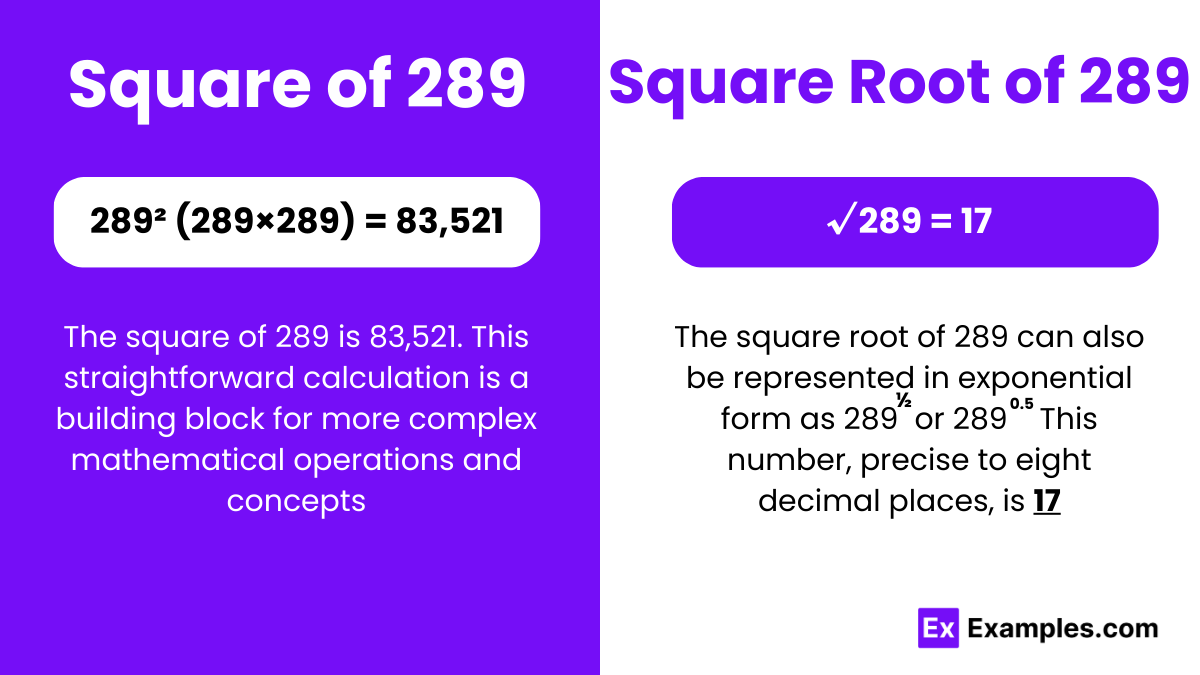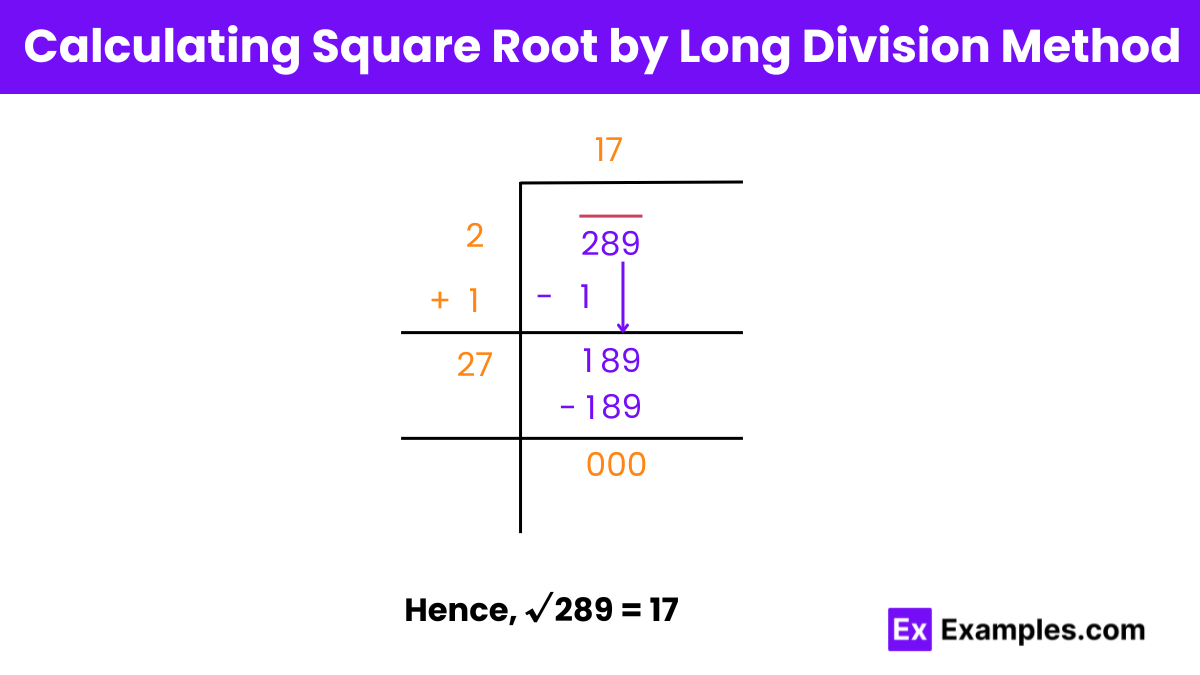What is the square of 17?
256
289
324
400


The square of 289 is 83,521
289×289 = 83,521.
So, the square of 289 is 83,521. This means that if you take the number 289 and multiply it by itself, you will get 83,521 as the result.
This calculation is often used in various mathematical problems, such as finding areas of squares or rectangles with sides of length 289 units, or in algebraic expressions involving squares of numbers.
The square root of 289 is 17.
The square root of a number is a value that, when multiplied by itself, gives the original number. For 289, we are looking for a number x such that x×x = 289. After performing the calculation or using a calculator, we find that 17×17 = 289. Therefore, 17 is the square root of 289. This is a straightforward example of a perfect square, where the root is an integer.
Exponential Form : 289^½ or 289^0.5
Radical Form : √289
The square root of 289 is rational. A rational number is defined as one that can be expressed as the fraction of two integers (a ratio), where the denominator is not zero. Since the square root of 289 is exactly 17, and 17 can be written as 17/1, it is a rational number.
Prime Factorization: Begin by factorizing 289 into prime factors. You continue dividing by the smallest prime (which, in this case, is itself since 289 is a prime number) until all factors are prime.
289 = 17×17
Square Root: Since the square root of a product of prime factors is the product of the square roots of each factor, and each factor is the same (17), the square root of 289 is simply 17.
This method confirms that 289 = 17. You can also use this method with calculators or computational tools for larger numbers where manual factorization would be impractical.

Yes, 289 is a perfect square. A number is considered a perfect square if there is an integer that can be squared to produce the original number. In the case of 289, the integer 17 squared (17 x 17) equals 289, making it a perfect square.
The significance lies in its properties that simplify calculations in various mathematical fields, such as algebra, geometry, and number theory. It also helps in solving quadratic equations and understanding geometric concepts involving areas.
One interesting pattern is that both the square root of 289 (17) and the square itself (289) consist of digits 1 through 9 exactly once (1 and 9 in 289 and 1 and 7 in 17).
Text prompt
Add Tone
10 Examples of Public speaking
20 Examples of Gas lighting
What is the square of 17?
256
289
324
400
What is the square root of 289?
12
13
14
15
Which of the following statements is true?
The square root of 289 is less than 15
The square of 13 is 289
The square of 17 is 225
289 is a perfect square of 14
If a number x squared equals 289, what is x?
12
13
14
15
What number squared gives 289?
12
13
14
15
What is the value of 13²?
256
289
324
144
Which of the following is a perfect square?
250
289
300
275
The square of which number equals 289?
12
13
14
15
What is the integer whose square root is 289?
11
12
13
14
What is the result of 17 × 17?
256
289
324
400
Before you leave, take our quick quiz to enhance your learning!

